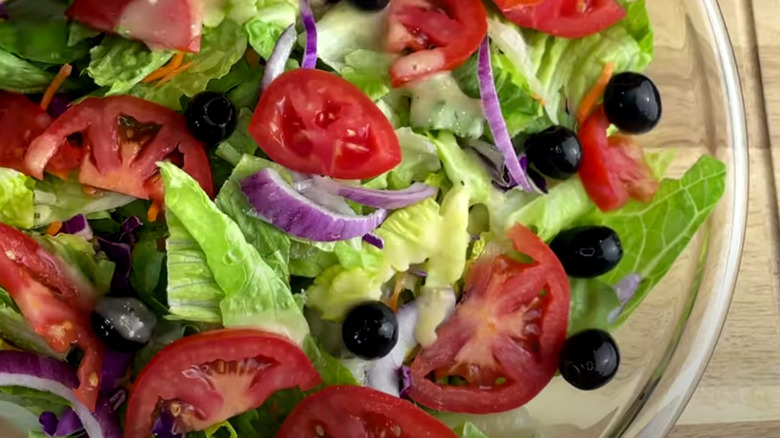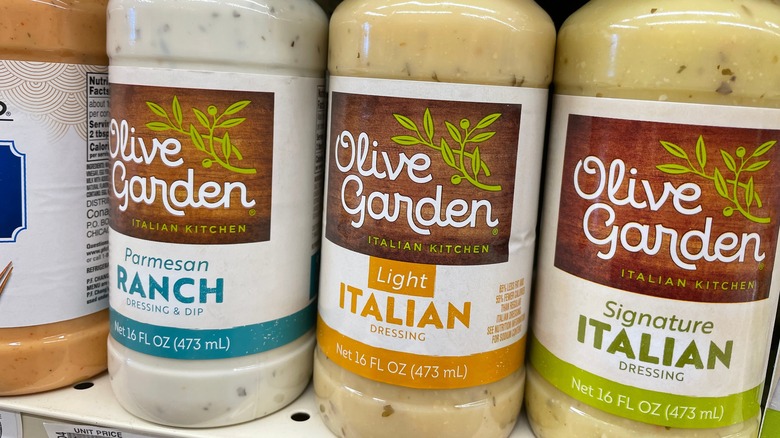Olive Garden Salads Taste So Good Because Of A Special Serving Trick
Eating a salad at Olive Garden is an all-around great sensory experience, from the cool, crisp lettuce to the tomatoes bursting with juice. And, of course, the restaurant's distinct tangy dressing is delicious, too. What you may not know is that some non-food elements play a part in making an Olive Garden salad such a supreme appetizer. Take the chilled salad plates, for example. If they're fresh from the plate chiller, they'll have a thin layer of condensed frost on them. As it turns out, the combination of the chill and the condensation are what levels up the salads at Olive Garden.
Salad lettuce wilts because it has lost moisture. A couple of factors influence how quickly the lettuce gives up its water, including heat. And it doesn't take much heat — just the warmth the salad absorbs from a room temperature plate can be enough, in fact. Once the fragile lettuce comes into contact with a warm plate, the lettuce's moisture starts to release and the wilting process begins.
Once the water inside the leaves evaporates, the lettuce wilts. Incidentally, this is why it's always better to put your Olive Garden's unlimited breadsticks on your bread plate instead of the chilled salad plate. The hot breadstick sitting next to (or even on top of your salad) starts or speeds up the evaporation process. The same thing happens when you put a hot protein, like grilled chicken, on your salad, too.
Other reasons that lettuce might wilt
There are some other things that contribute to your Olive Garden salad's fresh taste and mouthfeel, too, namely the way the salad is prepped. The restaurant's servers work with the raw materials for the salad, pulling together each ingredient separately. This includes the lettuce mix, tomatoes, pepperoncinis, red onions, olives, and croutons. And the same goes for Olive Garden's signature Italian salad dressing, available on Amazon. The person who makes your salad doesn't put the dressing on until right before it's ready to go to the table. And why? Because the salt content in the dressing will make the lettuce wilt.
Salt pulls the moisture out of lettuce leaves — and, well, everything, really — which causes them to wilt. The situation is exacerbated by the fact that Olive Garden salads consist primarily of iceberg lettuce. It's quite a fragile type of lettuce, so it doesn't take much salt in the dressing to make the lettuce lose its water and crispness.
The dressing is also why Olive Garden salad doesn't taste as good the next day. After you put the salad in the fridge and leave it for a few hours, the salt in the dressing starts to break down the lettuce, leaving you with wilted leaves. That's the bad news. The good news is there's a delicious way to solve the problem: Simply go back to the Italian restaurant chain and order a new bowl of salad, perhaps alongside one of Olive Garden's best dishes.

